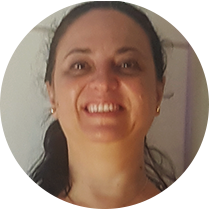- 12.25 AMA PRA category 1 CME Credits
- Printable Diploma
- 16 chapters
- More than 13 hours of video content
- 27 lectures
SPECKLE TRACKING MASTERCLASS
The Speckle Tracking MasterClass will teach you this important modality of echocardiography. You will gain a deep knowledge of strain rate imaging and where it can be applied to use it in your clinical practice right away.
OBJECTIVE:
After completing the Speckle Tracking MasterClass, you will be able to perform speckle tracking echocardiography, know which parameters can be determined, the pitfalls of the method, and when to use speckle tracking in clinical practice.
Speckle Tracking Echocardiography (STE) is an important new modality in echocardiography that will give you additional information to assess a full echo exam. This new course is presented in two parts (Compendium & Advanced), incorporating present guidelines and providing an overview of the most important literature, and will soon include a Case Library as a third part.
Designed for both beginners and advanced users, you will gain the understanding of what deformation is and how it can be measured with STE. And you will further learn how cardiac function is assessed by adding STE to conventional forms of quantification.
Through individual chapters, you will see the specific areas where STE can be applied, with emphasis placed on practical examples, cases, demonstrations, visuals, expert statements and how to interpret the results in specific clinical scenarios - all forms of cardiomyopathies, coronary artery disease, cardio-oncology and valvular heart disease.
Furthermore, leaders in the field share their personal experiences and views to highlight the potential, pitfalls and future application of this technology.
IDEAL FOR:
- Cardiologists
- Sonographers
- Internists
- Students
PREMIUM CHAPTERS
Compendium
Speckle Tracking Compendium is a systematic video tutorial covering the essentials of Speckle Tracking Echocardiography (Deformation Imaging) and how it can be used to study left heart function. The course provides an:
...Myocardial Mechanics - Advanced
An important chapter that will set the stage for a better understanding of strain and its role in cardiovascular disease. Here you will learn how the heart muscle contracts, which parameters of cardiac function we can describe and which components of strain we can discern.
Methodology and Normal Findings
This chapter will provide you with in depth knowledge on what deformation is and which parameters can be measured. You will learn how Speckle Tracking works, which advantages it has to tissue Doppler and if values can be compared among different vendors. Finally, we will answer the question:...
Instrumentation - Different vendors
How should a strain analysis be performed? Which buttons do I press? Which information can be obtained? We show you how to get the most out of a Speckle Tracking analysis on four different platforms (Canon/Toshiba, GE EchoPac, Siemens SC2000 and TomTec).
Thick Myocardium
Here you will dig deeper into the field of longitudinal strain in patients with increased wall thickness. You will learn how this tool can help in the differential diagnosis of different causes of "thick walls" such as hypertrophic CMP, hypertensive heart disease, amyloid heart disease and...
Dilated Cardiomyopathy - Advanced
Speckle Tracking can have a large impact on the management of patients with dilated CMP. This chapters demonstrates why it is of value, how it can help to assess left ventricular function and which prognostic information it provides. Again, we show many case examples that will help you better...
Cardio-Oncology
With improvements in the survival of cancer, chemotherapy induced cardiotoxicity is a growing problem. In this chapter, you will discover the magnitude of this problem, which risk factors we can identify and what the mechanisms of cardiotoxicity are. You will also learn how STE should be...
Dyssynchrony - Advanced
Speckle Tracking allows you to look at the timing of regional contraction. Therefore, STE can be used to study dyssynchrony in potential CRT candidates. This chapter will provide an overview on dyssynchrony and how the Speckle Tracking curves can help you to detect, and even quantify, the...
Coronary Artery Disease
With STE it is possible to look at regional contraction in the setting of coronary artery disease. In this chapter we will discuss how acute coronary syndromes and chronic coronary artery disease influence longitudinal strain, what post-systolic thickening is and why it is important in...
Stress Echo
If strain is able to detect ischemia, why not apply it during stress echocardiography? This chapter discusses the potential role and limitation of Speckle Tracking to detect coronary artery disease during stress echocardiography.
Aortic Stenosis
Left ventricular function plays an important role in the management of patients with aortic stenosis, and Speckle Tracking is able to provide valuable information on top of ejection fraction. This chapter will explain why and show how this technique can be used to monitor patients and assess...
Aortic Regurgitation
Aortic regurgitation can cause left ventricular dysfunction. With Speckle Tracking, we can detect deterioration of left ventricular function at an early stage. How can this be helpful in aortic regurgitaion? What are the current guidelines for the management of patients with AR? Keynote...
Mitral Regurgitation
Optimal timing of surgery in mitral regurgitation is critical for long term survival. In this chapter, we provide an overview of the current guidelines and show how Speckle Tracking can provide important additional information, both in structural and functional mitral regurgitation. Several...
Right Ventricular Strain
Longitudinal deformation can also be measured in the right ventricle. This chapter will show you how such an analysis is performed, how strain compares to traditional parameters of right ventricular function, what the normal values are and in which clinical scenarios this information is of...
Left Atrial Strain
The measurement of left atrial strain is a promising new way to study the function of the left atrium. It is easy to apply and could provide valuable information especially in patients with atrial fibrillation and diastolicdysfunction. In this chapter, we will discuss the physiology of the...
Future of STE
This chapter discusses the current limitations of the method and highlights the newest developments in ultrasound. Find out how Speckle Tracking can be used to directly image blood flow and and how high frame rate imaging could dramatically change the way we use Speckle Tracking in the future....









